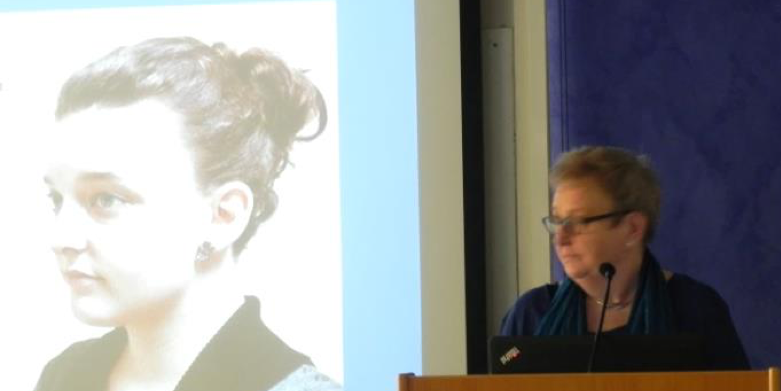Cyprus - local seminar
Cyprus - local seminar
2016-04-15 10:00


The Local Teachers’ Training took place on April 15, 2016. It was a one day event and was co-organised by the Department of Primary Education and the Pedagogical Institute. It was held at the premises of the Pedagogical Institute. Eighty (80) primary school art teachers took part in the training by invitation from the Department of Primary Education.
Presentations from CREARTE team members opened the event, announcing the acceptance of proposals for collaboration of primary schools with visual artists. The content of the aforementioned Educators’ Guide was presented, and emphasis was given on the rationale of the CREARTE project as well as the goals of the creative partnerships.
Two keynote speakers from the United Kingdom followed who were invited to address issues connected with the CREARTE theme. Professor Emeritus Rachel Mason (University of Surrey Roehampton)presented the topic Citizen Identification And Contemporary Art.
SusanOgier (University of Surrey Roehampton)presented the topic Creating An Artistic Identity For Primary Teachers And Children.
Later, during the day, the two keynote speakers held one workshop each in rotation, so as all participants could attend both workshops.
CITIZEN IDENTIFICATION AND CONTEMPORARY ART
Rachel Mason
This presentation originates in a funded project called Images and Identity (2009-2011). Artand Citizenship educators working in universities and schools in six European member statescollaborated on planning and teaching interdisciplinary lessons leading to the production ofcross-national teacher education materials. It picks up on two of the project findings: (1) thatcontemporary art is a very good tool for encouraging school children to express and share theirunderstandings of their personal and group identities; and (2) that citizenship is a form ofpersonal and social identification that art teachers tend to neglect. The presentation is in twoparts. In the first I will present some artist images selected as stimulus for exploring citizenidentity during the project and explain the resulting schemes of work. In the second I willinvestigate and critique the contemporary art movement called Craftivism with a view toconsidering its potential for helping teachers to engage school children in critical enquiry ofissues pertaining to democracy, citizenship and government and consider links betweenidentity and social action.
Agenda
Part A
8.00 – 8.30 Registration
8.30 - 8.45 Greetings
8.45 – 9.10 Presentation of the European Programme CREARTE.
The Process of Proposal Submissions for Partnerships with Visual Artists
9:10 – 9:20 Discussion
9:20 – 10:00 Citizen Identification and Contemporary Art
Rachel Mason, Professor Emeritus, Roehampton University
10:00 – 10:30 Coffee Break
10:30 - 11:10 Creating an Artistic Identity for Primary Teachers and Children
Susan Ogier, Senior Lecturer in Art and Design Education, Roehampton University
11:10 – 11:30 Discussion
Part B
11.45 – 13.45 Parallel Workshops
Workshop 1: Group Α
Workshop 2: Group Β
13:45 – 15:00 Lunch Break
15:00 – 17:00 Parallel Workshops
Workshop 1: Group B
Workshop 2: Group A
17:00 – 17:30 Conclusion and Closing
CREATING AN ARTISTIC IDENTITY FOR PRIMARY TEACHERS AND CHILDREN
Susan Ogier
This keynote will explore the process by which BA Primary teaching students at the Universityof Roehampton develop their identity as artists in the classroom through subject specificplacements in London primary schools. It will discuss the students’ experiences of workingboth with artists, and as artists. It will exemplify how they are encouraged to fully engage inboth planning and carrying out highly motivational art projects, through democraticallynegotiated dialogue with pupils and class teachers. Through enabling the students to stepaside from their usual conventional teaching practice to experiment with art processes andwork flexibly with the children, we shall see how this positively impacts upon their self-perception and self-identification as reflective teachers, increasing their ability to think and actartistically. It will also discuss the impact of this work on the children themselves, in allowingthem also to see themselves as artists. Reflective journals kept by the students provideevidence of changing mind-sets, and examples of these will be analyzed relating to how thepresence of children’s voice encourages a new confidence and understanding of everydayteaching and learning processes.
